
Verona - Verona guide, attractions and pictures
| Tweet |
Verona has a lot of Roman remains, one of them the magnificent Arena di Verona built in the 1st century AD. The Arena is the third largest in the world after the Colosseum in Rome and the amphitheatre in Capua near Naples. The Arena was used for gladiator battles, theatre and public executions. Today Arena di Verona is used for opera performances and the most frequently played is Verdiís Aida. The Arena can hold 25,000 people. It has elliptical shape and is 139m (456ft) long and 110m (361ft) wide.
Piazza delle Erbe was built on the spot of an ancient Roman forum. It is one of the focal points in Verona. Piazza Erbe has colorful market and is always busy. The piazza has been a market place for 2,000 years and today is lined with art galleries, boutiques and elegant cafes. The fountain at the centre of Piazza Erbe was installed in 1368 and on the top is the statue of the Madona of Verona, which in fact is a Roman statue. On the north side of the square a column with the Venetian lion on top symbolizes the Venetian rule under which Verona fell in 1405.
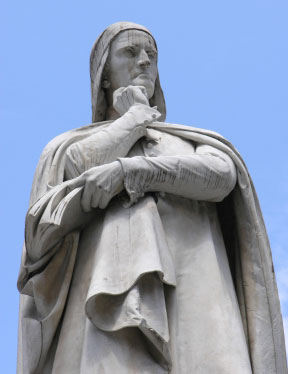
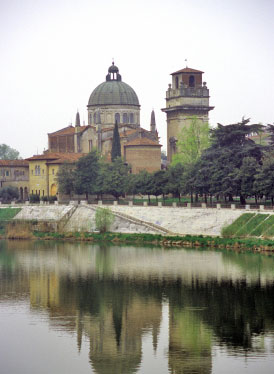
Piazza dei Signori is situated right next to Piazza Erbe and a 19th century statue of Dante looks down on the piazza. Dante was a guest of the ruling Scaligeri family in the early 14th century during his period of exile from his native Florence. He dedicated his Paradise (the last chapter of the Divine Comedy) to the ruler Cangrande I.
The Duomo Santa Maria Matricolare is a magnificent 8th century church with Romanesque portals and cloisters. The highlight of the Duomo is the first chapel which has Titianís Assumption painted between 1535-1540. The faÁade of the cathedral features 1200 scenes from the life of Christ.
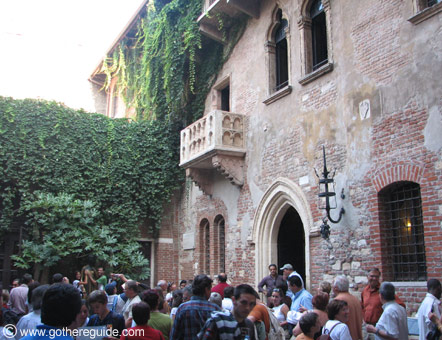
Casa di Giulietta - (The House of Juliet) is also in the city center. The romantic marble balcony at Villa Capuleti where Romeo supposedly climbed is in fact in a restored 13th century inn. The house on #27 Via Cappello is not linked to the romantic legend of Romeo and Juliet at all but is a popular tourist attraction.
Castelvecchio is a medieval castle built by Cangrande II in the mid 14th century. Today this magnificent castle is turned into an art gallery with aerial walkways and corridors designed by Carlo Scarpa. The art gallery contains Roman, early Christian and Renaissance Art. Ponte Scaligero links the castle with the other part of Verona spanning over the river Adige. The bridge is a localís favorite spot for stroll and a perfect place for admiring the sunsets and the Alps in the distance.
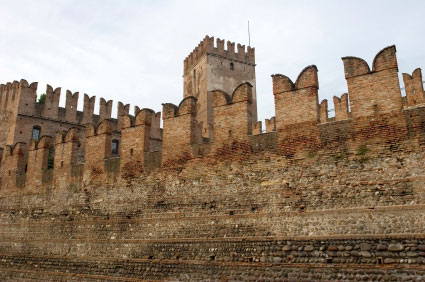
Ponte Romano is one of the many bridges linking the two banks of the Adige river. This Roman bridge is in close proximity to Teatro Romano(Roman Theatre), a semi-circle amphitheatre built in the 1st century BC. Today little of the original arena survives but it is a favorite spot for admiring the Verona skyline and a venue of the annual Shakespeare festival.
A monastery above the Teatro Romano is now converted to Museo Archeologico (Archeological Museum). The museum have a very nice setting above the city of Verona offering breathtaking views and displays mosaics depicting gladiator battles, a bronze bust of emperor Augustus and many ancient works of art. A lift takes the visitors from Teatro Romano to Museo Archeologico.
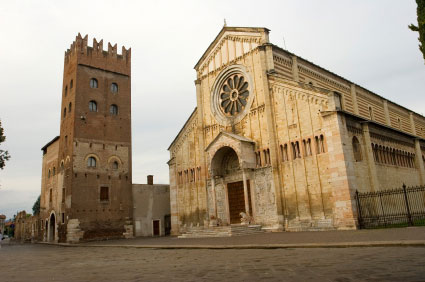
San Zeno Maggiore was built in the early 12th century and is one of the finest examples of ornate Romanesque church. The facade has reliefs of biblical scenes and an impressive rose window symbolizing the Wheel of Fortune. The three part altar depicts the Virgin and the child and was painted by Andrea Mantegna (1457-59). The Campanille (bell tower) is 72m (236 ft) high. The church has fine cloisters built in the late 13th century.
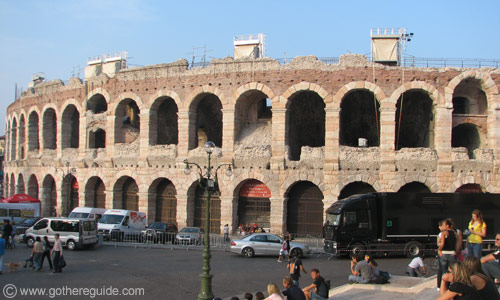
Arena di Verona
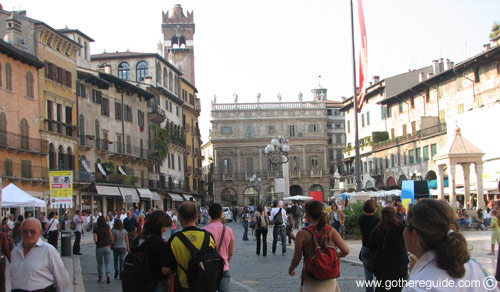
Piazza Erbe
Where is The Arena di Verona: Piazza Bra;
Where is Teatro Romano: Rigaste Redentore 2;
Where is Museo Archeologico: Rigaste Redentore 2;
All three sites are open daily from 8:30 AM to 7:30PM, Monday from 1:30 PM.
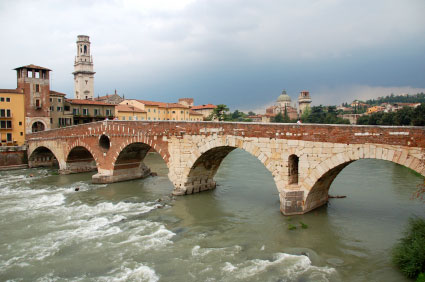
Ponte Romano, Verona, Italy
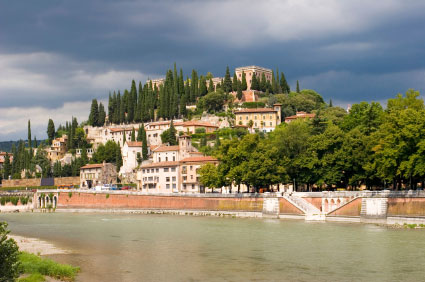
Piazzale Castel San Pietro, Verona
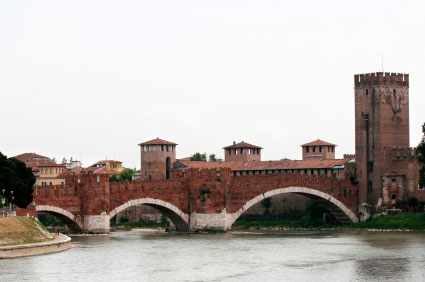
Ponte Scaligero, Verona

Arena di Verona
Please help us build a better site. Add your comments about Verona here.
jully says:
I visited Verona only for a couple of hours at night on my way to Milan and it was amazing. Verona at night is so beautiful. Piazzale Castel San Pietro is amazing and the bridge and the river most romantic. It was full of people even though it was during the winter. I have the most wonderful memories of Verona. A must see charming town!
I visited Verona only for a couple of hours at night on my way to Milan and it was amazing. Verona at night is so beautiful. Piazzale Castel San Pietro is amazing and the bridge and the river most romantic. It was full of people even though it was during the winter. I have the most wonderful memories of Verona. A must see charming town!
terry says:
Ah Verona! I love the Juliet balcony - so romantic!
Ah Verona! I love the Juliet balcony - so romantic!
joseph savage says:
I was there in 1977, i was in the military, and i was stationed in bocmotoco near Verona, aah, it was like a dream come true, and i may be bias by saying this, but i feel that if anyone should go to europe, then they should experience Verona, Italy first, and if you have a mate, then you should especially go there, even now, and its been 33 years, whenever i think of verona, i get dreamy eyes, it like I'm dreaming that i am back in such a beautiful, pretty and lovely city. whomever! go there, see it, and you will have an everlasting memory of this extraordinay dreamland. I'm smiling right at this very moment.
I was there in 1977, i was in the military, and i was stationed in bocmotoco near Verona, aah, it was like a dream come true, and i may be bias by saying this, but i feel that if anyone should go to europe, then they should experience Verona, Italy first, and if you have a mate, then you should especially go there, even now, and its been 33 years, whenever i think of verona, i get dreamy eyes, it like I'm dreaming that i am back in such a beautiful, pretty and lovely city. whomever! go there, see it, and you will have an everlasting memory of this extraordinay dreamland. I'm smiling right at this very moment.

Verona Attractions
Copyright © GoThereGuide.com 2015
All rights reserved.
All rights reserved.
User Comments about Verona